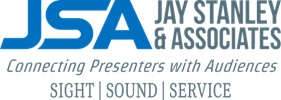Classrooms | Applications
Educational spaces and audiovisual technology are a natural combination. Teachers present new material day-in and day-out and there is little question that technology improves learning outcomes. In addition to providing a fun and effective means of sharing information with students, the use of technology prepares students for an increasingly digital world.
Interactive Whiteboards (also called smart boards and interactive display systems) are one of the most exciting audiovisual technologies for classrooms. Students and teachers can write on these LCD screens just like they would write on a whiteboard or chalkboard. They feature innovative technology like handwriting recognition that can translate even the poorest penmanship into a fully-legible font. With the most modern touch interface systems, teachers can invite several students to write and draw on the board simultaneously.
Classroom systems also frequently feature document cameras. These work like a traditional overhead projector for transparencies, but with the added ability to display 3D objects. In laboratories, teachers can project experiments such as dissections without having to gather students closely around. Books and other printed materials can be shared without first transferring the content to a transparent sheet.
Most of our audiovisual technology can be easily installed onto a cart to create a mobile solution. This can extend technology into every classroom without the expense of a separate, dedicated system in each classroom.
In computer labs, our technology allows instructors to not just view and interact with student workstations, but also to share it with the class on a flat panel display or projection system. Instructors can also annotate directly over the content to draw attention to certain portions or to provide feedback.
Distance learning is becoming a part of many educational programs. Our systems let every student hear and be heard without leaving their desks. They can collaborate with students on the other side of the school, other side of the city, or other side of the world. They can visit people and places that no school bus could ever connect them with.
STEM Environments
Classrooms and other learning environments for Science, Technology, Engineering, and Math (STEM) education are unique and they require unique audiovisual solutions. Displays like projection systems and flat panels are critical; in some STEM environments, you may find close to a dozen of these. These systems are used not only by instructors, but also by students while working in small groups.
A room's acoustics are also important. During team work and collaboration sessions, students may be louder than in a traditional learning environment. Sound systems should be chosen to amplify instructors' voices so that every student can hear them in this noisy environment. Additionally, steps should be taken to ensure that sounds from your classroom do not become noise in nearby classrooms.
Since STEM environments need to be flexible, you need audiovisual components that are flexible too. This can take the form of wireless video connections so that computers and other devices can be shared from anywhere in the room, portable lecterns and podiums that allow instructors to teach from multiple locations, or adaptive desks and other furniture that can easily transition between group sessions and individual work.
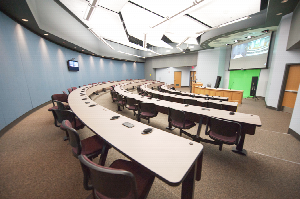 Instructional Technology Training Center
Instructional Technology Training Center
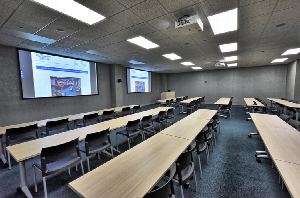 Graduate Medical Education Classroom
Graduate Medical Education Classroom
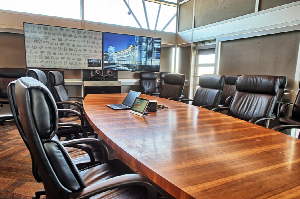 Meeting Room with Semi-Portable Video Conferencing Cart
Meeting Room with Semi-Portable Video Conferencing Cart
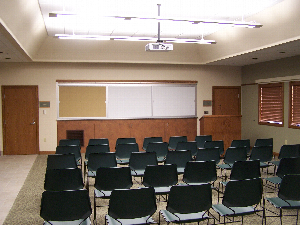 Multi-Purpose Divisible Classrooms
Multi-Purpose Divisible Classrooms

